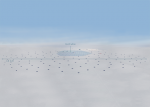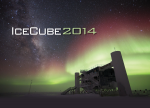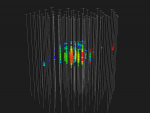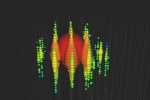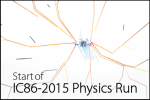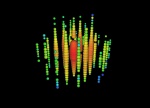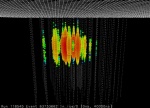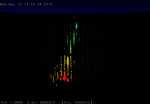A few years after the completion of IceCube, one of the major goals of building this strange cubic-kilometer detector at the South Pole has already been accomplished: the unequivocal observation of an astrophysical neutrino flux.
Strong evidence for a very high energy neutrino flux of extraterrestrial origin was found in November 2013, and new data from IceCube now confirms the discovery. Once more, the Antarctic detector brings us still the highest energy neutrino ever observed. This 2-PeV neutrino event was detected by IceCube on Tuesday, December 4, 2012. It was dubbed “Big Bird.”
Last June, attendees at the Neutrino 2012 international conference heard about two rare events observed by the IceCube neutrino telescope. Science-trained eyes immediately classified them as something they had never seen before. In a paper submitted to Physical Review Letters, the IceCube Collaboration confirms that those two events are the two highest energy neutrinos ever observed.

